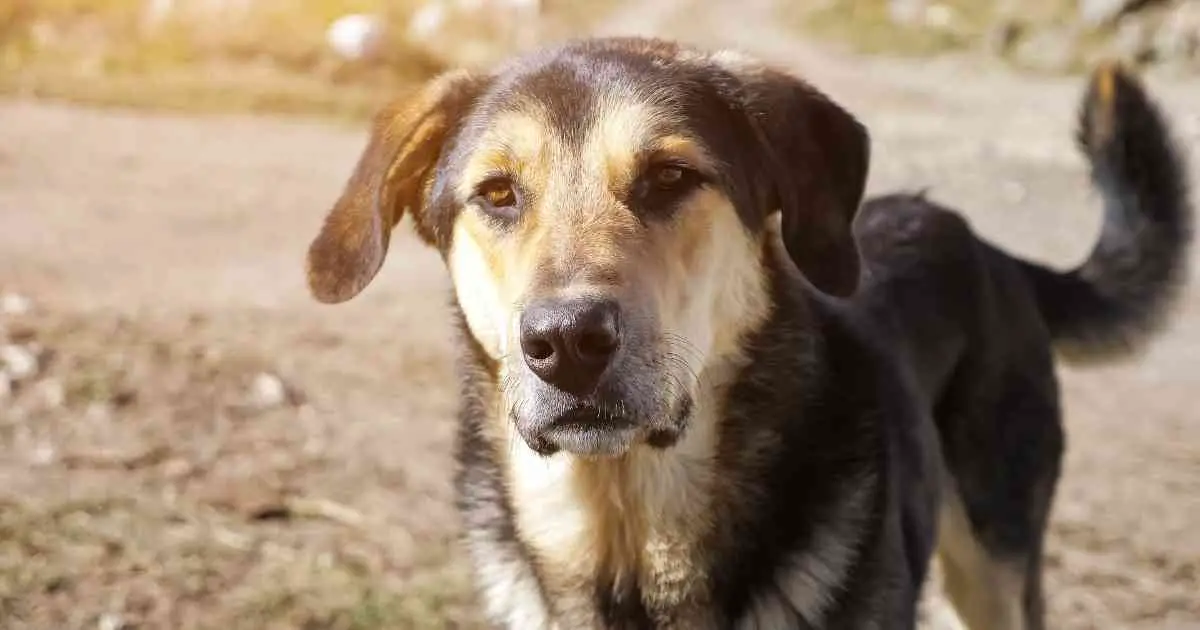Dogs are often said to be man’s best friend, but they can sometimes violently turn on their owners. While some dogs are naturally aggressive and will bite without warning, there are usually certain warning signs that indicate that a dog is about to attack. You can prevent being bitten by a dog if you know what to look for. This blog post will discuss common dog will bite sign. Remember that not all dogs exhibit these signs, so you should always use caution around any dog, even those who seem friendly.
Dog Will Bite Sign Warning

Owners are frequently astonished when their adorable canine best friend bites them. They have no idea that dogs exhibit modest behavioral changes that can act as warning indications before biting. Some of these signs are:
Yawning, Licking the Lips, or Avoiding Eye Contact
Yawning, licking lips, or avoiding eye contact are the earliest signs of a dog’s discomfort. These signals imply that the dog is bored, but they might also indicate pain. If the dog starts yawning and refuses to make eye contact, they’re probably stressed.
These behaviors show a dog’s unease and discomfort. If you keep your dog in an uncomfortable condition for too long, it may become more aggressive. If the dog cannot find a way out of the situation, biting may result.
Frightened and Tucked-away Tail
It cowers and tucks its tail between its knees when you approach, signifying fear. This doesn’t imply they’ll bite you, but they might bite you if you make them interact with you against their will and outside of their comfort zone. So, resist the impulse to pat your dog and move away. They’ll show up when they’re ready.
Growling, Snapping, or Exposing Teeth
The most straightforward approach for a dog to warn people of a potential bite is with a mighty growl that may be accompanied by showing or snapping teeth. When dogs feel displeased or highly uncomfortable with their surroundings, they display this behavior. When you see a dog growling, snapping, or flashing its fangs, try to figure out what’s making them feel threatened, and if it’s safe, eliminate the threat to put the dog at peace.
Wagging Tail

This is one of the most baffling symptoms of an impending bite for owners. A wagging tail is frequently a sign of contentment, but it can also indicate that a dog is nervous. Tail-wagging styles differ between these two events. A pleased dog will wag its tail and entire body as if it cannot contain its pleasure. A worried dog will wag its tail slowly and slightly higher while still. This form of tail wag occurs only when a dog is uncomfortable with the circumstance.
The Sclera of the Eyes is Visible
The whites of a dog’s eyes are veiled when it’s joyful. The whites of a dog’s eyes, on the other hand, are a clear warning sign that a bite is coming. Its focus narrows and remains constant when a dog is attacked or intimidated, showing its sclera.
Even if the dog moves their head slightly, its eyes will remain in close contact with its target, resulting in the sclera of a dog’s eyes being seen but not its stare when it moves its head. The whites of a dog’s eyes aren’t visible while they’re relaxed.
Still Body
Another sign that a bite is on the way is a stiff body. Every aspect of a dog’s body relaxes and wiggles when it is happy. Every muscle in a dog’s body stiffens when it is angry. This means they’ll be standing square, ears perked, and tail raised, practically frozen in place. When dogs assume this body attitude, they are uncomfortable with the current situation.
Raised Fur Around the Neck or on the Back
When a dog feels threatened, its neck and back hair will stand up. This makes the dog look more extensive than it is and warns predators that they are not to be messed with.
This behavior is also known as hackles, and it happens when a dog feels scared or threatened. If you see hackles on your dog, try to figure out what makes them feel that way and remove the threat if it is safe.
How to Prevent Your Dog From Biting

The best way to prevent your dog from biting is to provide them with a safe and comfortable environment. Dogs who feel secure are less likely to bite. Ensure your dog has a safe place to stay when they feel overwhelmed or threatened. This could be a crate, a bed in a quiet room, or even just a spot on the couch.
Provide your dog with plenty of toys and chew bones to keep them occupied. A bored dog is more likely to become restless and agitated, leading to biting.
Make a connection with your dog. Dogs, as we all know, are sociable creatures. They enjoy playing and socializing with others. Allow them to interact with the people with whom you interact. This will teach your dog not to be afraid when meeting a new human. Well-socialized dogs are less likely to bite out of fear.
Be patient with your dog. Do not try to force them to do anything they are not comfortable with. If they show signs of discomfort, such as growling or stiffening their body, back off and give them some space.
Never punish your dog for growling or showing their teeth. This can make them more likely to bite, as they will learn that showing warning signs can lead to negative consequences. Instead, provide positive reinforcement when the dog remains calm in situations that make them anxious. This will help them to feel more comfortable and less likely to bite.
If you are concerned that your dog may bite, consult with a certified animal behaviorist or veterinarian for help. They can assess your dog’s behavior and guide you on how to prevent the biting.
How to Protect Yourself from Dog Bites
There are several things you can do to prevent being bitten by a dog.
Ask the Owner Before Petting a Dog
If you would like to pet a dog, ask the owner for permission first. If the owner is not present, it is best not to pet the dog as you do not know if it is friendly.
Don’t Approach a Dog That You Do Not Know
While you may be familiar with your dog’s emotions and behaviors, strange dogs pose a more significant risk. Don’t approach a strange dog, especially if it appears to be aggressive.
Don’t Try to Pet a Dog Eating, Sleeping, or Caring for Puppies
Dogs are naturally protective of food and their young. Appearing in these areas may trigger an aggressive response from the dog. This is especially true if the dog is a mother with young puppies.
Remain Calm When Facing an Aggressive Dog
When dealing with an aggressive dog, the best thing to do is remain calm. Dogs instinctively want to chase you if you turn your back and run. Screams will also startle the dog, exacerbating the problem.
As the dog begins to calm down, maintain as much stillness as possible, keep your hands down, and avoid making eye contact with the dog. Back away slowly until you are at a safe distance.
First and foremost, safeguard your neck and vital organs. Being bitten on the arm or leg is usually better than being bitten on the neck or face. If you’re bitten, don’t try to get away while the dog’s teeth are on you – you’ll tear. Instead, use a stick as a lever in the back corner of the dog’s mouth to get the dog to let go.
Maintain a Calm and Relaxed Demeanor
If you’re walking your dog and another dog approaches, slack the leash completely and remain relaxed and comfortable. Allow 3 seconds for the dogs to sniff before asking them to keep moving in a kind and calm tone possible. A quick greeting can excite a dog’s curiosity while ending the interaction before it becomes problematic.
Don’t Force the Dog to Play
Don’t play rough or apply excessive pressure to a dog that isn’t yours, a protective dog, or one who hasn’t been taught to love the handling. Don’t make assumptions about a dog’s capabilities before getting to know it. Not all dogs are capable of rough play, and you must get to know a dog well to assess whether they appreciate and can handle different types of touch.
When Attacked
If you’re being attacked, try to distract the dog by putting something in its jaws (a handbag, backpack, jacket, etc.). If a dog has knocked you down, curl up, cover your ears, and try not to move. Any dog bites should be reported to the relevant authorities, and any injuries should be treated medically.
Dog Will Bite Sign Conclusion
Dogs are territorial animals and will do whatever it takes to protect their homes. If you see warning signs like these, it’s essential to take them seriously and be cautious around the dog. It’s always best to err on the side of caution in animal interactions, so if you’re not sure whether or not a dog will be friendly, it’s always best to keep your distance.
